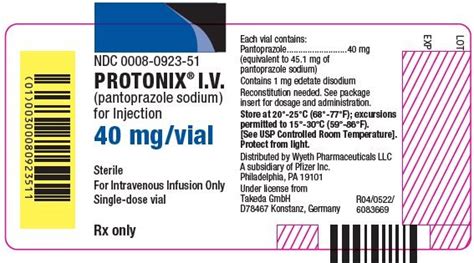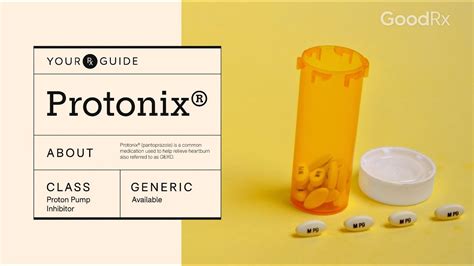Intro
The importance of understanding the uses and benefits of certain medications cannot be overstated, especially when it comes to treating conditions that affect the digestive system. Protonix, also known by its generic name pantoprazole, is one such medication that has been widely used for various purposes. Its primary function is to reduce the amount of acid produced in the stomach, making it a valuable treatment option for several conditions. In this article, we will delve into the details of Protonix, its uses, benefits, and how it works, providing readers with a comprehensive understanding of this medication.
Protonix has been a staple in the treatment of gastrointestinal disorders for many years, and its effectiveness has made it a preferred choice among healthcare professionals. The medication works by inhibiting the production of gastric acid, which can cause discomfort, pain, and damage to the stomach lining and esophagus. By reducing acid production, Protonix helps to alleviate symptoms associated with conditions such as gastroesophageal reflux disease (GERD), Zollinger-Ellison syndrome, and peptic ulcers. The versatility of Protonix in treating these conditions has made it an essential component of many treatment plans.
The mechanism of action of Protonix is based on its ability to irreversibly inhibit the H+/K+ ATPase enzyme system at the secretory surface of gastric parietal cells. This inhibition blocks the final step of acid production, resulting in a significant reduction in gastric acidity. The reduction in acid production helps to heal and prevent ulcers in the stomach and intestines, as well as reduce symptoms of acid reflux and heartburn. Understanding how Protonix works is crucial in appreciating its benefits and potential side effects, making it easier for patients to make informed decisions about their treatment options.
What is Protonix Used For?

Benefits of Using Protonix
The benefits of using Protonix are numerous, making it a preferred treatment option for many patients suffering from acid-related disorders. Some of the key benefits include: * Rapid relief from symptoms: Protonix can provide quick relief from heartburn, regurgitation, and other symptoms associated with GERD and peptic ulcers. * Healing of ulcers: By reducing stomach acid production, Protonix helps in the healing of stomach and duodenal ulcers, reducing the risk of complications. * Prevention of future ulcers: Protonix can prevent the formation of new ulcers, especially in patients taking NSAIDs, which are known to cause stomach ulcers. * Improved quality of life: By alleviating symptoms and preventing complications, Protonix can significantly improve the quality of life for patients with chronic conditions like GERD.How Protonix Works

Steps to Take Protonix
Taking Protonix as directed by a healthcare provider is crucial for its effectiveness and to minimize potential side effects. Here are some steps to follow: * Take Protonix exactly as prescribed, usually once a day, with or without food. * Swallow the tablets whole; do not chew or crush them. * If taking the oral suspension, shake the bottle well before use and measure the dose carefully. * Do not stop taking Protonix without consulting a healthcare provider, as this can lead to a return of symptoms.Precautions and Side Effects

Interactions with Other Medications
Protonix can interact with several medications, either by enhancing or reducing their effects. Some of these medications include: * **Warfarin**: Protonix can increase the levels of warfarin in the blood, leading to an increased risk of bleeding. * **Ketoconazole**: The absorption of ketoconazole can be reduced by Protonix, decreasing its effectiveness. * **Atazanavir**: Protonix can significantly decrease the absorption of atazanavir, a medication used to treat HIV infection.Practical Examples and Statistical Data

Conclusion and Future Directions
In conclusion, Protonix is a highly effective medication for the treatment of various acid-related disorders. Its ability to reduce stomach acid production makes it an invaluable tool in the management of conditions such as GERD, peptic ulcers, and Zollinger-Ellison syndrome. As research continues to uncover the full potential of proton pump inhibitors like Protonix, it is likely that their use will expand into new areas, providing relief to even more patients suffering from gastrointestinal disorders.What is the primary use of Protonix?
+Protonix is primarily used to reduce the amount of acid produced in the stomach, making it a valuable treatment option for conditions such as gastroesophageal reflux disease (GERD), peptic ulcers, and Zollinger-Ellison syndrome.
How does Protonix work?
+Protonix works by inhibiting the H+/K+ ATPase enzyme system at the secretory surface of gastric parietal cells, resulting in a significant reduction in gastric acidity.
What are the common side effects of Protonix?
+Common side effects of Protonix include headache, diarrhea, nausea, vomiting, and abdominal pain. Serious side effects can include allergic reactions and interactions with other medications.
We hope this article has provided you with a comprehensive understanding of Protonix, its uses, benefits, and how it works. If you have any further questions or would like to share your experiences with Protonix, please do not hesitate to comment below. Your input can help others make informed decisions about their treatment options. Additionally, if you found this article helpful, consider sharing it with others who may benefit from this information. Together, we can promote awareness and understanding of gastrointestinal health and the medications that support it.
